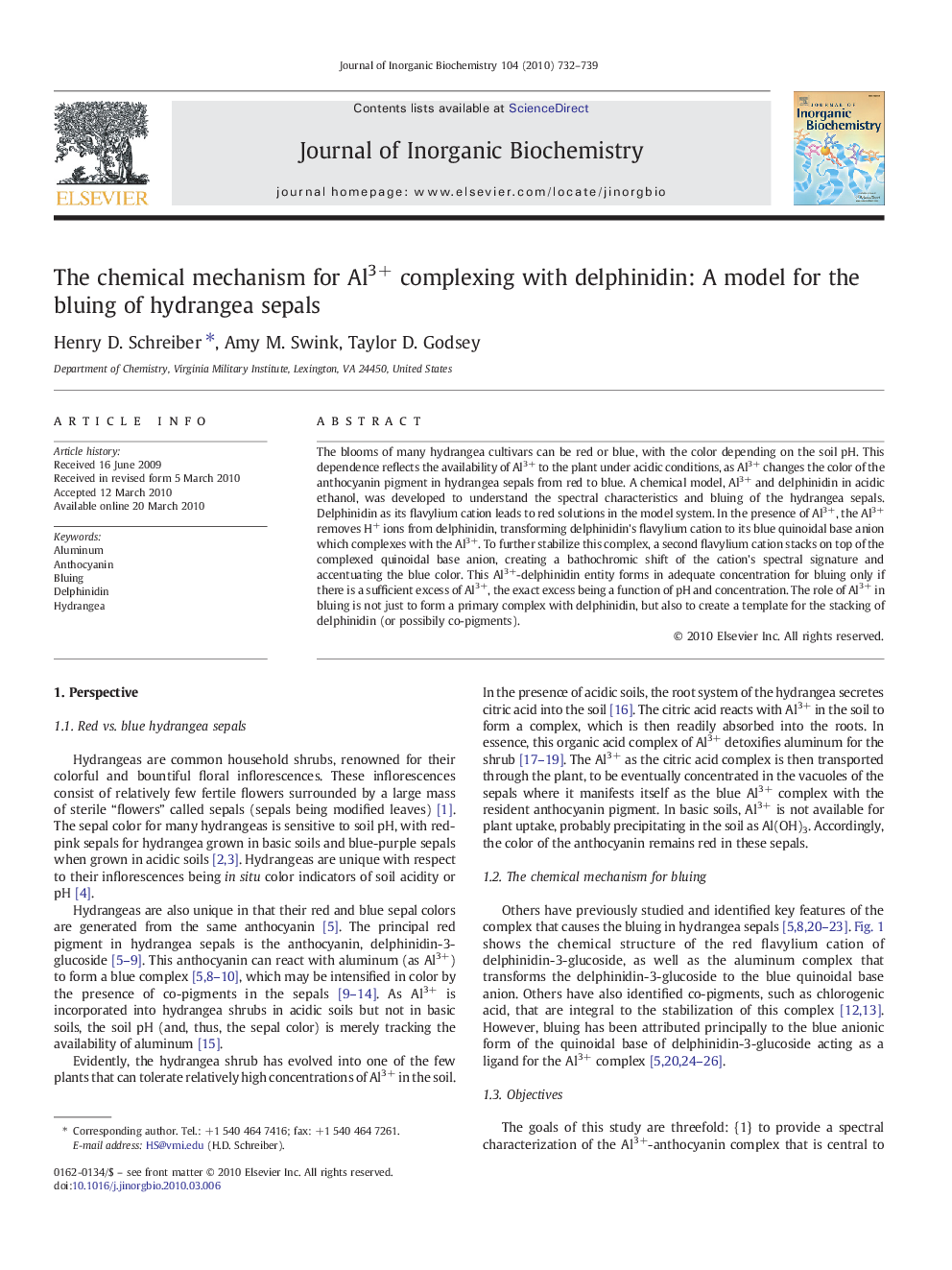| Article ID | Journal | Published Year | Pages | File Type |
|---|---|---|---|---|
| 1316695 | Journal of Inorganic Biochemistry | 2010 | 8 Pages |
The blooms of many hydrangea cultivars can be red or blue, with the color depending on the soil pH. This dependence reflects the availability of Al3+ to the plant under acidic conditions, as Al3+ changes the color of the anthocyanin pigment in hydrangea sepals from red to blue. A chemical model, Al3+ and delphinidin in acidic ethanol, was developed to understand the spectral characteristics and bluing of the hydrangea sepals. Delphinidin as its flavylium cation leads to red solutions in the model system. In the presence of Al3+, the Al3+ removes H+ ions from delphinidin, transforming delphinidin's flavylium cation to its blue quinoidal base anion which complexes with the Al3+. To further stabilize this complex, a second flavylium cation stacks on top of the complexed quinoidal base anion, creating a bathochromic shift of the cation's spectral signature and accentuating the blue color. This Al3+-delphinidin entity forms in adequate concentration for bluing only if there is a sufficient excess of Al3+, the exact excess being a function of pH and concentration. The role of Al3+ in bluing is not just to form a primary complex with delphinidin, but also to create a template for the stacking of delphinidin (or possibily co-pigments).
Graphical abstractA blue complex forms in acidic ethanol when a quinoidal base anion of delphinidin complexes with Al3+, with a flavylium cation of delphinidin stacked on top.Figure optionsDownload full-size imageDownload as PowerPoint slide
